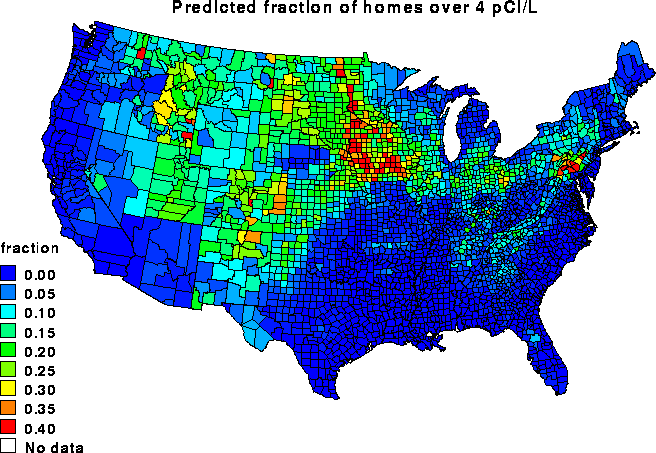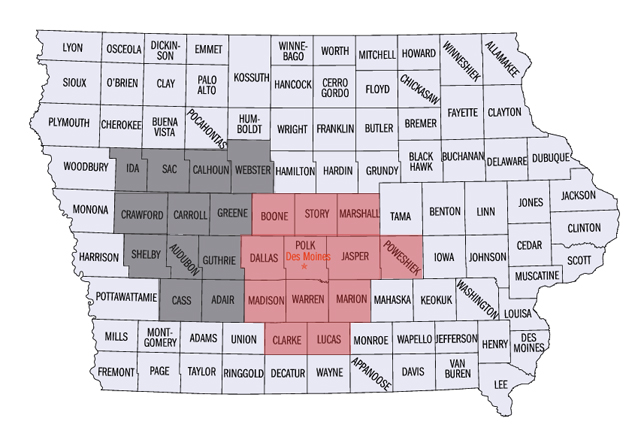High Radon Levels in Many Iowa Counties
Are you in danger of having high radon levels in your home? Iowa is the state with the highest average radon level in the country. Why are radon levels in Iowa so high? Radon is a radioactive gas that is formed during the breakdown of radium in the ground. Radon levels are particularly high in Iowa due to glaciers that deposited finely-ground soil in the area. The large surface area of this soil allows it to emit a lot of radon gas.
The following map shows radon levels by county throughout the United States. Notice that Iowa contains several more counties with elevated radon levels (indicated by red) than most other states.
You may be wondering why this is such a big deal. Exposure to radon is the second leading cause of lung cancer and kills around 400 Iowans every single year. In fact, radon is the second leading cause o lung cancer next to smoking – prolonged radon exposure causes up to 20,000 cases of lung cancer per year.
This means that radon can pose a serious threat to Iowa residents. The average concentration of radon indoors in Iowa is 8.5 pCi/L, which is over six times the national average. Because it is impossible to detect radon in your home, you should have your home professionally tested as soon as possible.
Reduce Radon Levels in Your Iowa Home
Ameriserv Radon Mitigation of Iowa can test your home for radon and provide mitigation services to reduce high radon levels. We offer both short-term and long-term radon testing to determine if you are in need of radon mitigation services to lower radon levels. We also offer DIY Radon testing kits. If you choose to perform a DIY test and the results show a high radon level, you should follow up with a professional test to get a more accurate idea of radon levels.
 If we find that the radon levels in your home are higher than the recommended 4.0 pCi/L in your home, we can install a radon mitigation system. These systems use fans and pipes to reroute radon from the basement (or ground level of the home) upwards, where it is then vented out of the home.
If we find that the radon levels in your home are higher than the recommended 4.0 pCi/L in your home, we can install a radon mitigation system. These systems use fans and pipes to reroute radon from the basement (or ground level of the home) upwards, where it is then vented out of the home.
Radon often enters the home through the basement, or through cracks in the foundation. In addition to mitigation, it may be beneficial to ensure that foundation cracks in your home are repaired. This will further prevent radon from entering the home.
If you live in Iowa, you are in danger of high radon levels and should have your home tested as soon as possible. However, certain counties are even more at risk for high radon levels. Click here to find an interactive map that shows average radon levels in your county – and do not hesitate to contact Ameriserv for an appointment today. See the map on the right to find out if we serve your Iowa county.
 Our Response to COVID-19
Our Response to COVID-19 
